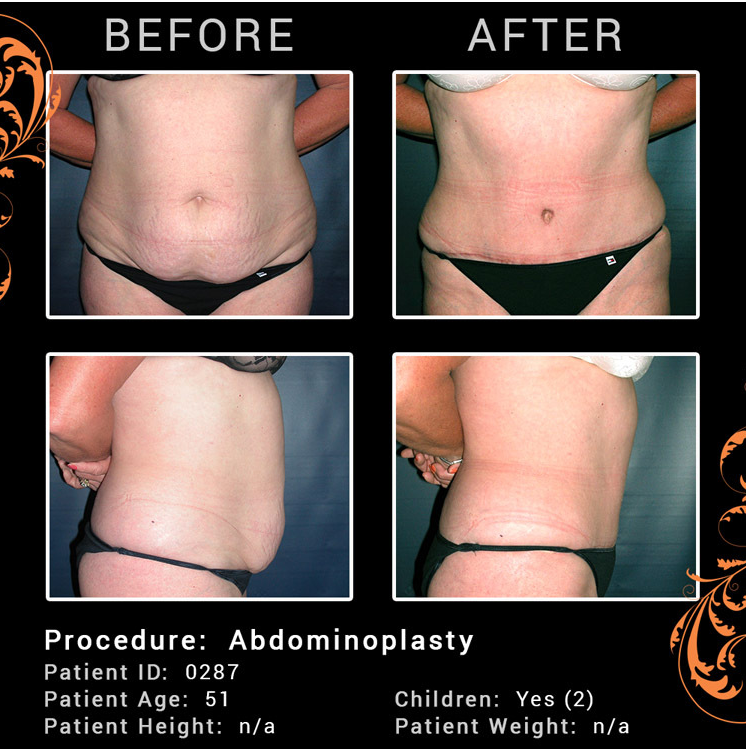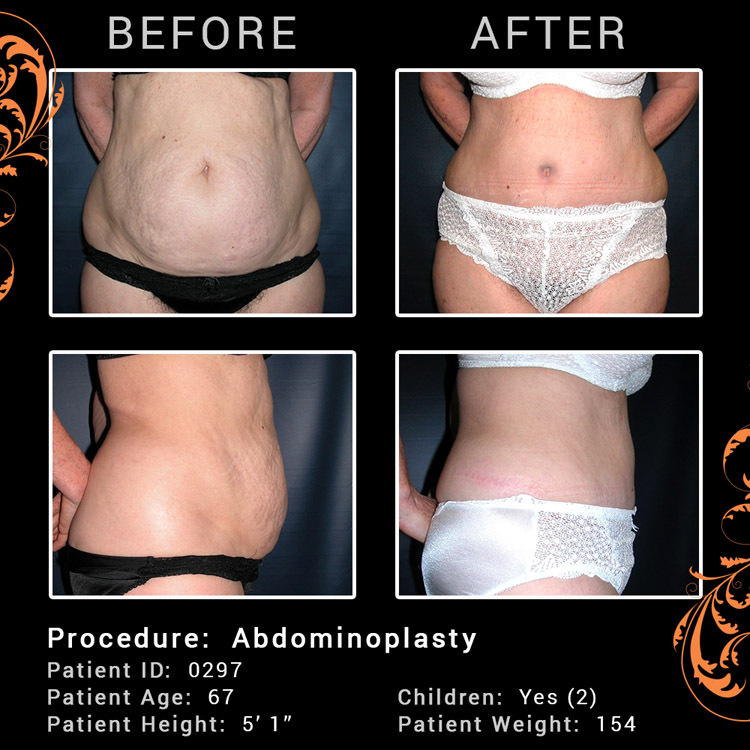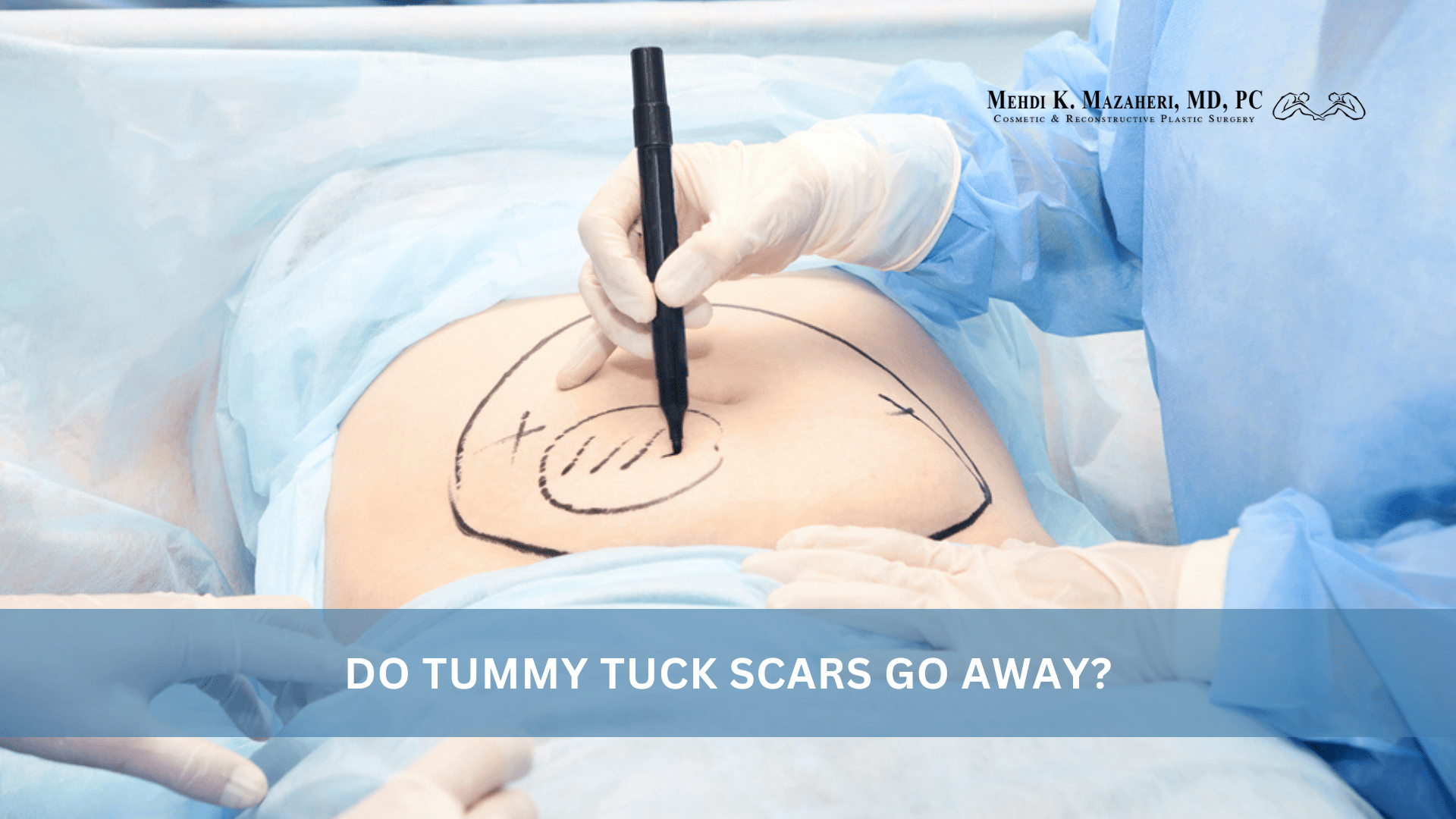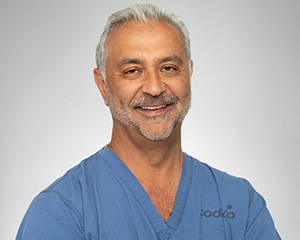Tummy tuck surgery, also known as abdominoplasty, has become increasingly popular in recent years. According to recent statistics, there has been a 37% increase in demand for tummy tucks since the pre-pandemic era, with a staggering 161,948 procedures performed in 2022 alone.
Want to know more about the intricacies of tummy tuck surgery, including its benefits, recovery process, and whether the scar will go away? You’ve come to the right place.
Page Topics
What Is a Tummy Tuck Scar?
A tummy tuck scar is the result of surgical incisions made during an abdominoplasty, a procedure that removes excess skin and fat from the abdomen to tighten the abdominal muscles. Here’s what you need to know about tummy tuck scars:
- Length and Size: The length and size of the scar varies depending on the extent of the surgery and the patient’s anatomy. Generally, the scar spans the width of the abdomen, ranging from a few inches to several inches long.
- Appearance: The scar may appear red, raised, and slightly lumpy right after surgery but will gradually fade and flatten over time. The final appearance of the scar varies between patients and is influenced by factors such as skin type, healing ability, and surgical technique.
- Visibility: While the scar may be visible initially, it typically becomes less noticeable as it matures and blends with the surrounding skin. Clothing and swimwear can also help conceal the scar, allowing individuals to feel more confident about their appearance.
While a tummy tuck scar is an inevitable outcome of the procedure, proper care and follow-up with your surgeon can help minimize its visibility and promote optimal healing.

Tummy Tuck Procedure Before and After
Where Will My Tummy Tuck Scar Be Located?
During a tummy tuck procedure, the location of the scar depends on the type of abdominoplasty performed. Here’s a breakdown of the different types of tummy tucks and their corresponding incisions:
- Full Tummy Tuck: In a full tummy tuck, the incision is made horizontally across the lower abdomen. It typically extends from one hip bone to the other. This incision allows for the removal of excess skin and fat along with the tightening of abdominal muscles.
- Mini Tummy Tuck: For a mini tummy tuck, a smaller incision is made just above the pubic area, usually spanning a shorter distance than with a full tummy tuck. This type of tummy tuck is ideal for individuals with little excess skin and muscle laxity below the navel.
- Extended Tummy Tuck: An extended tummy tuck involves a longer incision that extends beyond the lower abdomen to address excess skin and fat on the sides or flanks. This incision may wrap around the hips to improve contouring of the waist and flank areas.
- Fleur-De-Lis Tummy Tuck: This type of tummy tuck is suitable for patients who have undergone significant weight loss and have excess skin in the lower abdomen as well as vertically. The incision pattern resembles a “T” shape, with a horizontal incision similar to a full tummy tuck and a vertical incision extending upwards from the lower abdomen to the breastbone.
What Is Considered Bad Scarring?
When it comes to tummy tuck scars, several undesirable outcomes can occur. This can lead to what is commonly referred to as “bad scarring.” Here are some types of problematic scars that may result from an abdominoplasty:
- Raised Scar: Also known as a hypertrophic scar, this type of scar appears raised and may be thicker than the surrounding skin. It typically stays within the boundaries of the original incision but can be more noticeable.
- Hypertrophic Scar: Similar to a raised scar, hypertrophic scars are thick and elevated but remain confined to the boundaries of the incision. They may appear red or pink initially but can gradually fade over time.
- Keloid: Keloid scars extend beyond the original incision site and may continue to grow over time. They’re characterized by excessive scar tissue formation and can be itchy, painful, and cosmetically displeasing.
- Widened Scar: Some tummy tuck scars may widen over time, resulting in a broader appearance than initially expected. Factors such as poor wound care, tension on the incision, and genetic predisposition can contribute to scar widening.
- Hyper and Hypopigmented Scars: Hyperpigmented scars are darker in color than the surrounding skin, while hypopigmented scars appear lighter. These pigment changes can occur due to inflammation, sun exposure, or variations in melanin production during the healing process.
- Tethered Scars: Tethered scars are characterized by tightness or a pulling sensation around the scar area. They may restrict movement and cause discomfort, particularly during activities that involve stretching or bending.

Bad Scarring from Tummy Tuck
Tummy Tuck Healing Process
While the healing process varies between patients, proper wound care, scar management, and patience are essential for achieving optimal tummy tuck scar outcomes Here’s how the scarring from a tummy tuck typically progresses over time:
Right After Surgery
- Scars are fresh, red, and raised.
- Swelling and bruising around the incision sites are common.
- Surgical dressings and compression garments are worn to support healing.
First Few Weeks to Months
- Scars begin to gradually fade from red to pink.
- Swelling starts to subside, but scars may still appear raised and slightly lumpy.
- Itching and mild discomfort around the scar sites may persist.
- Patients should avoid strenuous activities and follow post-operative care instructions carefully.
Six Months Later
- Scars continue to flatten and soften, becoming less noticeable with time.
- Redness diminishes further, and scars may start to blend with the surrounding skin.
- Most swelling resolves, revealing improved contouring of the abdomen.
- Patients may begin to see significant improvement in scar appearance, although final results may take a year or more to achieve.
One Year Later
- Scars mature and become less conspicuous, taking on a lighter color.
- The texture of the scars smoothens, and any remaining lumps or irregularities may continue to improve.
- Patients typically achieve their final outcome in terms of scar appearance and overall abdominal contour.
- Continued use of scar management techniques, such as silicone sheets or gels, can further enhance scar healing and minimize visibility.

Tummy Tuck Healing Process
How to Minimize Scarring Before and After Surgery
Here are some strategies to help you minimize scarring before and after a tummy tuck surgery. We’ll also explain what to do if your scars are slow to heal.
Before Surgery
- Follow Pre-operative Instructions: Adhere to any pre-operative instructions provided by your surgeon, such as quitting smoking and avoiding certain medications that may affect healing.
- Maintain a Healthy Diet: Consuming a nutritious diet rich in vitamins and minerals can support the body’s healing process and promote optimal skin health.
- Stay Hydrated: Drink plenty of water to keep the skin hydrated, which can aid in wound healing and minimize the risk of complications.
- Discuss Scar Placement: Have a detailed discussion with your surgeon about scar placement and incision techniques to minimize the visibility of scars and achieve your desired outcome.
After Surgery
- Follow Post-operative Care Instructions: Adhere strictly to post-operative care instructions provided by your surgeon, including proper wound care, wearing compression garments, and avoiding activities that may strain the incision sites.
- Use Scar Management Techniques: Apply silicone sheets or gels as recommended by your surgeon to promote scar healing and minimize scar visibility.
- Avoid Sun Exposure: Protect scars from sun exposure by using sunscreen or covering them with clothing to prevent hyperpigmentation and minimize the risk of scar darkening.
- Attend Follow-up Appointments: Attend all follow-up appointments with your surgeon to monitor the healing progress and address any concerns or complications promptly.
What to Do if Scars Heal Slowly
- Consult Your Surgeon: If you notice slow healing or any signs of infection, contact your surgeon immediately for evaluation and guidance.
- Consider Scar Revision: In cases where scars are slow to heal or result in undesirable outcomes, such as keloids or hypertrophic scars, discuss scar revision options with your surgeon.
- Explore Additional Treatments: Your surgeon may recommend additional treatments such as laser therapy, steroid injections, or scar massage to promote scar healing and improve appearance.
- Patience and Persistence: Healing takes time, so be patient and consistent with your scar management routine. With proper care and time, most scars improve significantly over time.
Get Your Personal Consultation
Abdominoplasty Remains a Safe and Reliable Procedure
Abdominoplasty continues to be a popular and trusted procedure for individuals seeking to achieve a firmer, more toned abdomen. Despite concerns about scarring and recovery, advancements in surgical techniques and post-operative care have made abdominoplasty a safe and reliable option for many. With its ability to address excess skin and stubborn fat, coupled with its consistent outcomes, abdominoplasty remains a go-to choice for those striving to enhance their body contour and boost their confidence.
Schedule a judgment-free consultation today with Dr. Mazaheri—Scottsdale’s premier board-certified plastic surgeon—to explore personalized treatment options that are tailored to your needs. You can trust our dedicated team to guide you from consultation to recovery, ensuring you achieve the results you want.
FAQs
How long does it take for tummy tuck scars to heal?
Tummy tuck scars typically take around 12 to 18 months to fully heal and mature. However, the appearance of scars continues to improve over time, with noticeable fading and flattening occurring within the first year.
What treatments are available for tummy tuck scars that don’t fade?
Several treatments can help improve the appearance of tummy tuck scars that don’t fade adequately:
- Laser therapy
- Steroid injections
- Scar revision surgery
- Silicone sheets or gels
- Scar massage techniques
Can tummy tuck scars be revised?
Yes, tummy tuck scars can be revised through scar revision surgery. This procedure aims to improve the appearance of the scar by removing excess scar tissue, repositioning the scar, or employing other techniques to enhance its cosmesis.
What is the progression of a tummy tuck scar?
The progression of a tummy tuck scar involves various stages:
- Initially, scars appear red, raised, and swollen.
- Over the following months, scars gradually fade in color and flatten.
- By around 12 to 18 months post-surgery, scars continue to mature, becoming lighter and less noticeable.
What is the best way to hide a tummy tuck scar?
Several strategies can help conceal a tummy tuck scar:
- Clothing: Wearing high-waisted bottoms or garments with waistbands can cover the scar.
- Scar makeup: Specialized scar makeup products can camouflage the scar’s appearance.
- Scar placement: Discussing scar placement options with your surgeon can help position the scar in less visible areas, such as below the bikini line.
Can you prevent a tummy tuck scar?
While it’s not possible to prevent a tummy tuck scar entirely, following pre-operative and post-operative care instructions diligently can minimize the risk of complications and optimize scar healing. Additionally, choosing an experienced surgeon and maintaining a healthy lifestyle can contribute to better wound-healing outcomes.
Comments are closed.



